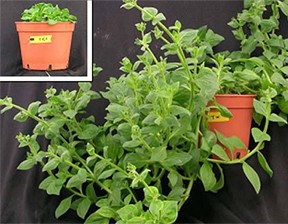 On January 18, researchers from Japan's Institute of Physical and Chemical Research (RIKEN) and the University of Michigan announced the development of a technique for engineering "mini-plants" that are 1/10th their ordinary size.
On January 18, researchers from Japan's Institute of Physical and Chemical Research (RIKEN) and the University of Michigan announced the development of a technique for engineering "mini-plants" that are 1/10th their ordinary size.
The researchers claim it is possible to tailor the size of plants by manipulating the genes that regulate the activity of growth hormones. The technique is expected to lead to the creation of miniaturized versions of decorative houseplants, as well as dwarf crops that are easier to harvest and more resistant to wind damage.
In studying dwarf varieties of rice and wheat created through ordinary hybridization, the researchers found damage to the genes that synthesize gibberellin, a growth hormone. When researchers looked for a mechanism to control the growth hormone, they discovered that the GAMT1 and GAMT2 genes commonly found in plants were responsible for producing an enzyme that neutralizes gibberellin.
When the researchers engineered strains of petunias and thale cress (Arabidopsis thaliana) in which the two genes were constantly expressed, the plants grew to 1/10th their ordinary size. When plants were administered gibberellin, they grew to their normal size, demonstrating that the size of plants can be freely adjusted.
[Source: Yomiuri]

No Comments